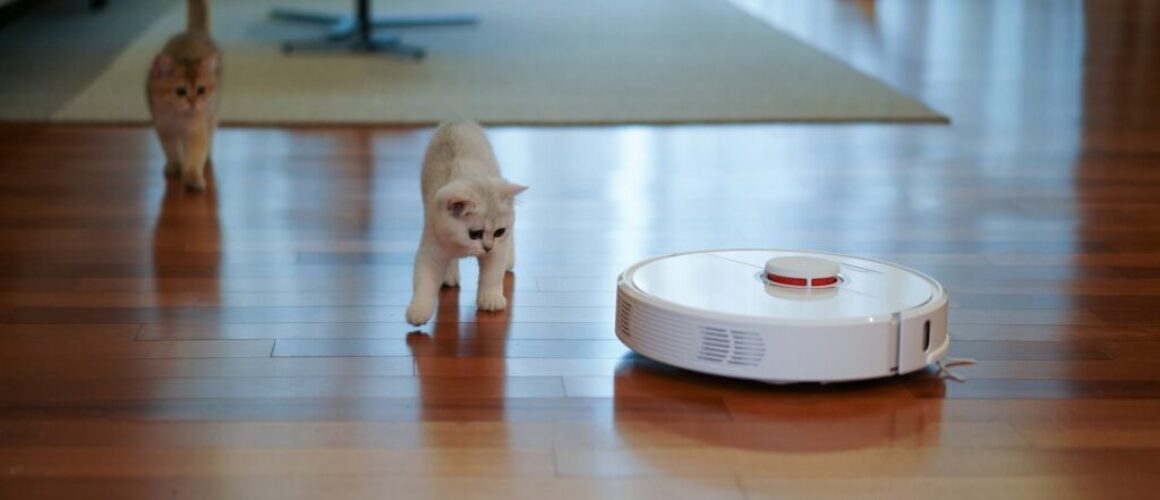A Buyers’ Guide To Owning A Robot Vacuum
If you’re uncertain about purchasing a mini robot vacuum cleaner, this manual can offer assistance. Robot vacuums have progressed significantly since their inception. Initially perceived as mere novelties, they are now regarded as serious appliances. Although some models still encounter obstacles as they maneuver, their suction power and navigation abilities have greatly improved.
Recent innovations include self-emptying bases, reducing the need for frequent dustbin emptying, and object recognition, enabling the vacuum to avoid and alert you to obstructions. Given these advancements, it’s no surprise that more people are welcoming these little helpers into their homes. However, if you’re considering one of the best robot vacuum for tile floors, what factors should you consider? This manual will walk you through the various types available and the pros and cons of each, empowering you to make a well-informed decision.
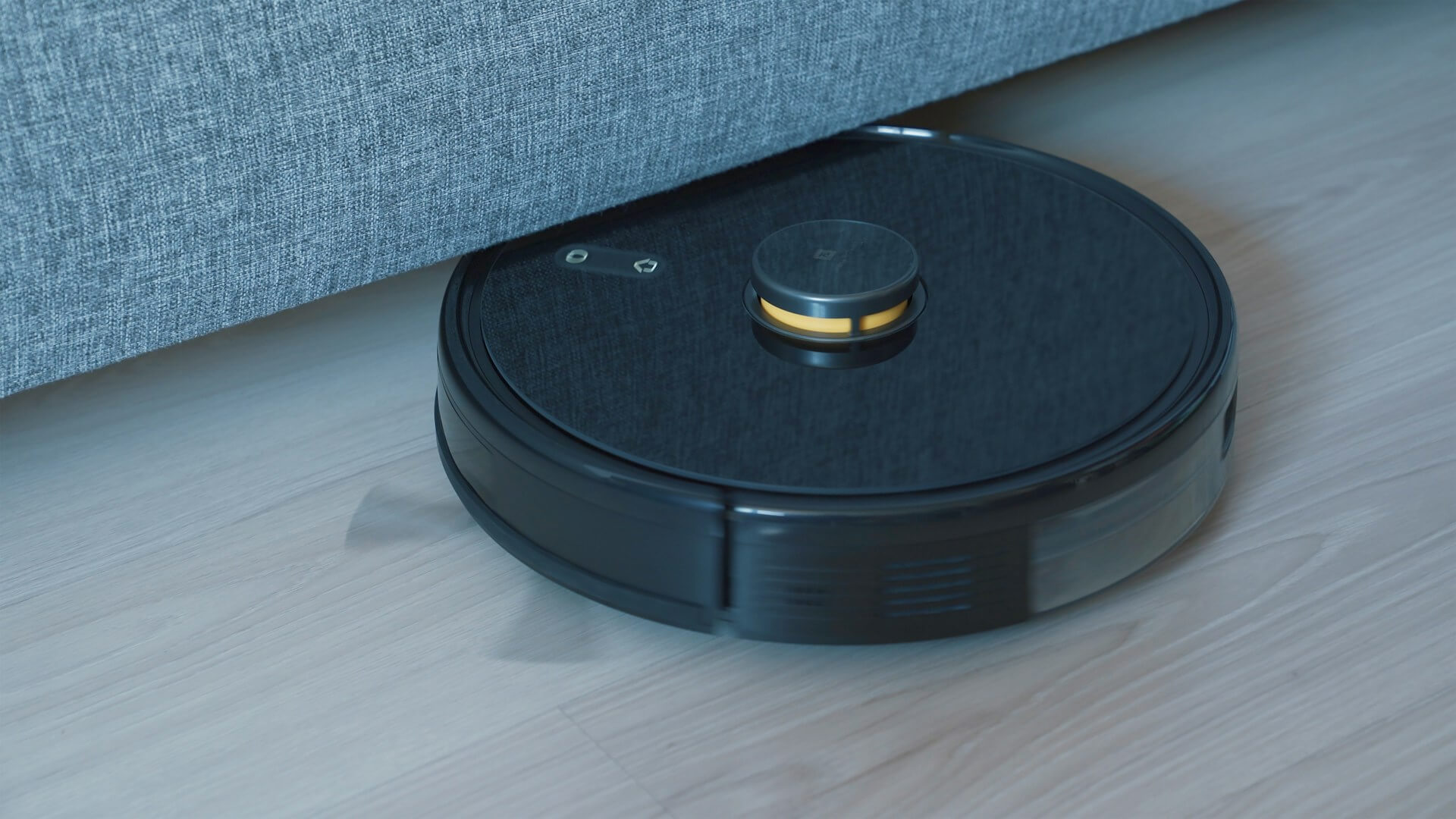
How To Identify The Right Robot Vacuum
Prior to proceeding with any other tasks, ensure you have a clear understanding of your financial limits. Robot vacuum prices range from just under $200 to over $1,400, making it surprisingly easy to exceed your budget. We suggest establishing your budget and required features beforehand to streamline your search process.
This approach enables you to pinpoint exactly what you need and secure the best value for your money. It’s worth noting from our own experience that a hefty price tag doesn’t necessarily equate to superior performance in robot vacuums. Our tests have revealed that certain models perform just as effectively as those priced twice as high. Therefore, avoid being swayed by costly features that you’re unlikely to utilize.
The most suitable 360 robot vacuum for you will depend on factors such as your home’s layout, specific requirements, and preferences. For example, some excel on hard floors while others are better suited for carpets. If you have pets, there are specialized robot vacuums designed to tackle pet hair. Therefore, assess your home’s needs before making a decision. If you predominantly have hard floors, you might find a robot mop to be essential.
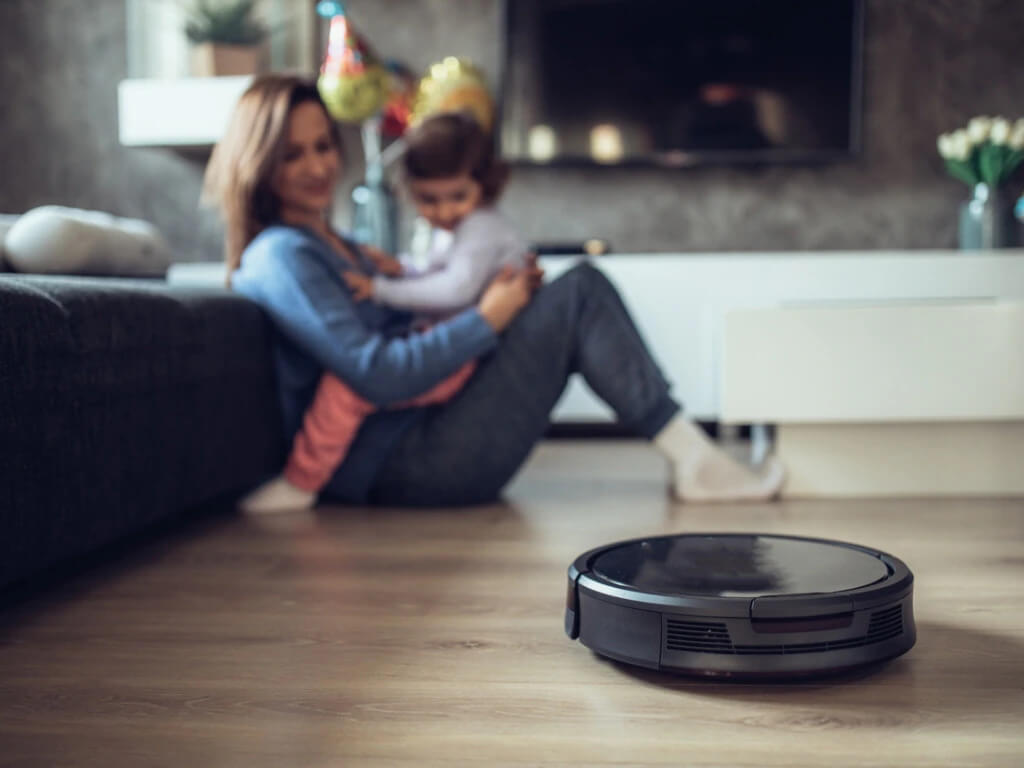
Test Criteria
We’ve conducted extensive testing on numerous robot vacuum models to assist you in finding your perfect fit. Our tests involved collecting various debris types from both hard floors and carpets, including Cheerios, kitty litter, and pet hair.
Additionally, we evaluated each robot vacuum’s performance in a real home environment to uncover every advantage and drawback. Factors such as app accessibility and control ease were scrutinized, along with available settings like no-go zones and multi-level mapping.
Based on our thorough assessments, we’ve compiled several buying guides showcasing our findings, including recommendations for the best robotic vacuum for carpet, tiles, best cheap robot vacuums, and best robot mops.
Furthermore, we can provide insights into what to expect when using a robot vacuum in your home for the first time. Whether you need assistance selecting a model or simply want to learn more about robot vacuums to determine if they’re suitable for your needs, you’ve come to the right place. Here are some purchasing tips to kickstart your journey.

Our Top Tips For Buying The Right A Robot Vacuum
- Begin by assessing your residence. Evaluate whether it predominantly features hard surfaces or carpeting. If carpeted, what’s the width? You might need the best robot vacuum for thick carpet, to compensate for this. Additionally, factor in the presence of pets—will the robotic vacuum need to handle litter or heavy shedding? These factors are crucial to contemplate prior to embarking on your robotic vacuum purchasing journey.
- Establish your financial parameters. As previously mentioned, advanced robotic vacuum models can exceed $1,000 in cost. However, there are more economical options available, starting at around $119. Nevertheless, expect to compromise on certain premium functionalities like WiFi connectivity or a self-emptying dustbin.
- Are you interested in companion applications? Certain robotic vacuum models can be synced with dedicated apps, offering conveniences such as remote monitoring and scheduling of cleaning sessions. These apps may also assist in mapping your living space and designating restricted areas.
- Robotic vacuums employ diverse navigation techniques. Lower-tier models typically navigate erratically, rebounding off walls and obstacles. Conversely, mid-range to high-end models often utilize advanced systems such as lasers and optical sensors for precise guidance.
Performance discrepancies exist among models. Each robotic vacuum operates uniquely, with some excelling at capturing dust and debris, while others are more adept at handling pet hair. Furthermore, certain models may be optimized for hard surfaces over carpeted areas.
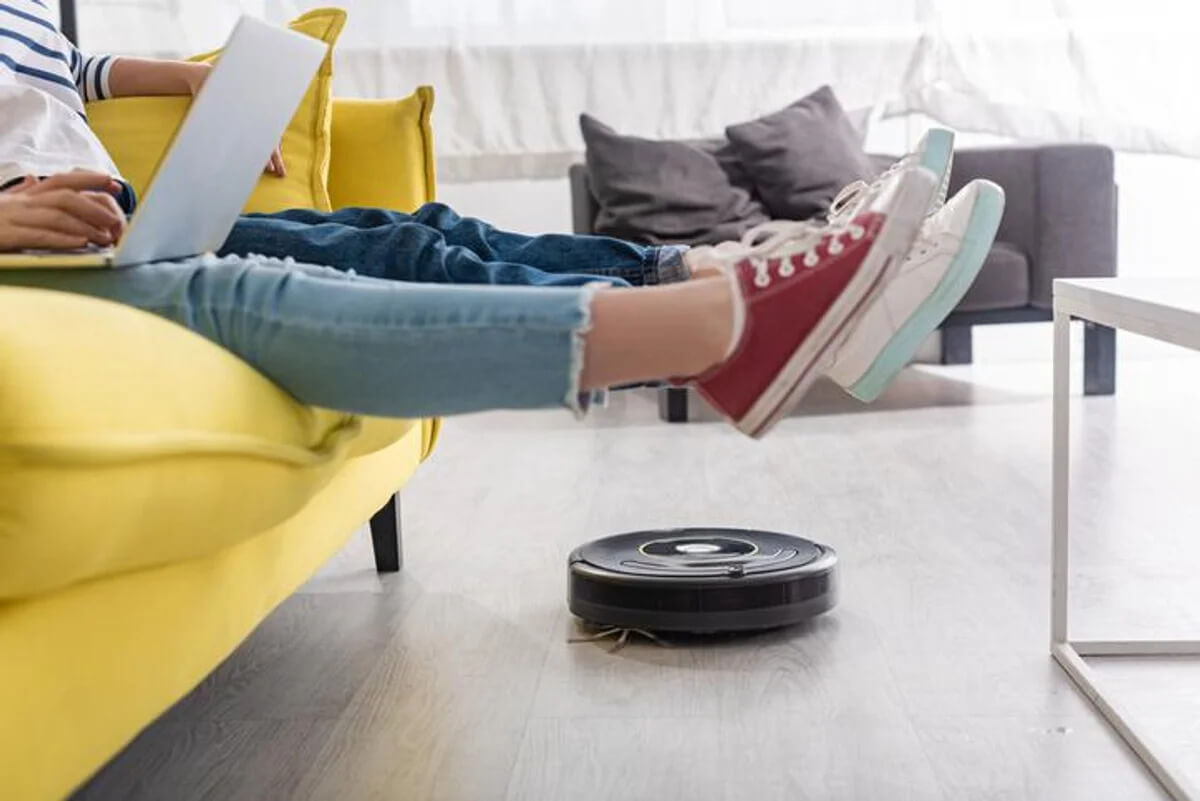
Why Most People Decide To Buy A Robot Vacuum
Welcome to the era of automation, where robots handle numerous tasks effortlessly. From self-driving cars to airborne drones and intelligent vacuum cleaners adept at navigating around obstacles. A 360 robot vacuum ensures a consistently tidy environment, sparing you the inconvenience of lugging out a bulky traditional vacuum cleaner every time a spill occurs.
Despite recent strides in robot vacuum technology, it’s wise to retain a conventional vacuum for thorough cleaning sessions. Mini robot vacuums excel at daily upkeep, swiftly tackling crumbs, pet hair, dust, and miscellaneous debris that accumulates on your floors. They are usually Ideal for both household and office settings, alleviating concerns about maintaining a clean environment amidst busy schedules or shared living spaces.
The best robot vacuum for wood floors, tiles or carpets offer convenient scheduling options for multiple daily cleaning sessions, with some featuring smartphone apps that allow you to monitor their progress in real-time. Concerned about allergens or dust? Certain models even boast self-emptying capabilities, transferring collected debris into a larger bin to minimize your exposure to airborne particles.
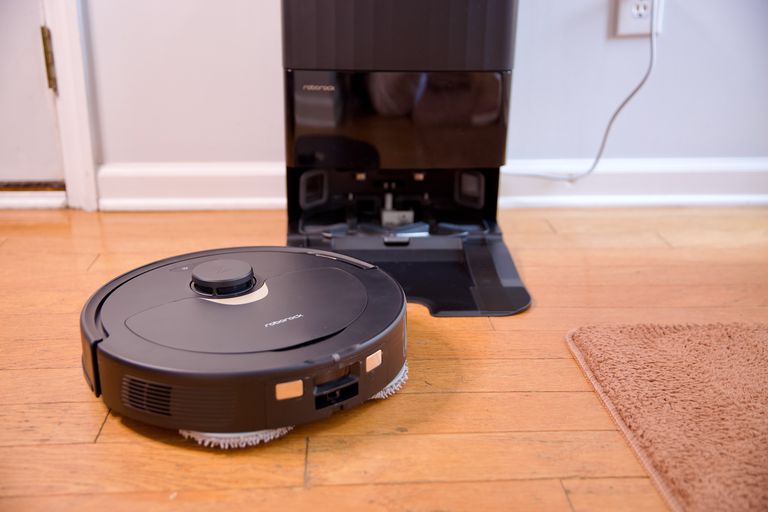
First Thing To Consider Before Buying A Robot Vacuum: The Size Of Your House
Before diving into your preferred retail store’s offerings, it’s crucial to assess the size of your residence. Certain robotic vacuum cleaners, such as the Evol 3 Laresar Robot Vacuum excel in compact settings like apartments and townhouses, while others like the iLife V3X Pro which is the upgraded version of the iLife V3s Pro, is better suited for larger areas spanning up to 2,000 square feet, encompassing multiple rooms and floors. Your choice largely hinges on your dwelling’s dimensions.
Additionally, it’s essential to consider the clearance space beneath your furniture for the robot vacuum to maneuver. For instance, taller models like the iLife T10s Robot Vacuum Cleaner, standing at 3.6 inches, may struggle to fit under low-clearance furniture such as couches. Conversely, more compact options like the ES23 Clean Smart Robot Vacuum, measuring just under 2.85 inches tall, offer greater flexibility in navigating tight spaces.
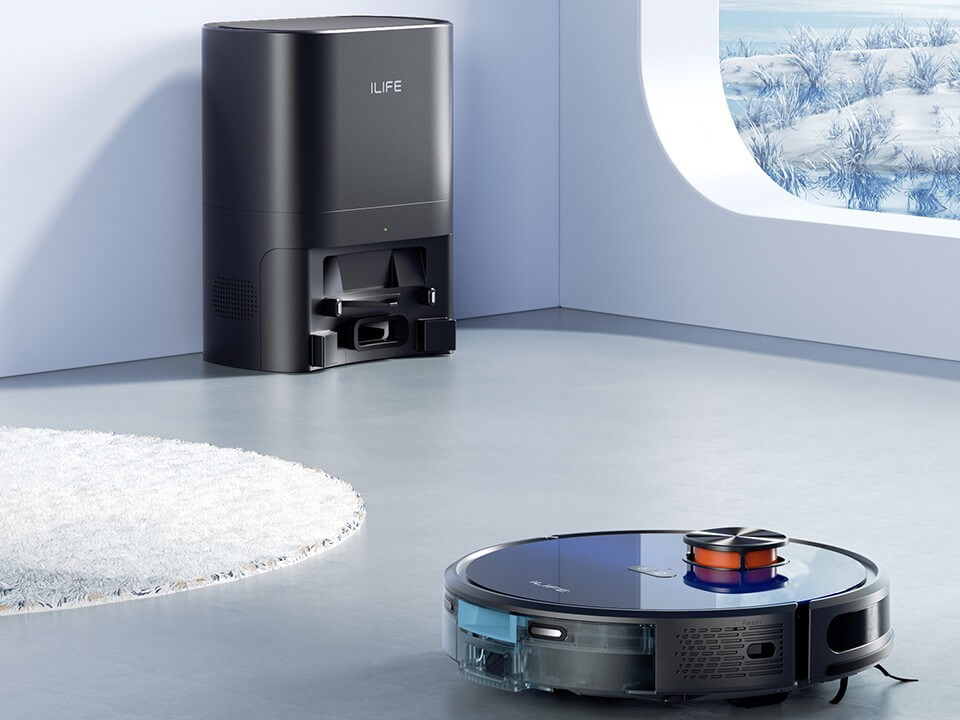
T10s iLife Robot Vacuum Cleaner
What Is Your Floor Specification? Carpet, Tiles Or Hardwood?
The majority of commercial robot vacuum variants are adept at cleaning both carpets and hardwood floors, although certain models excel at one surface over the other. Premium robot vacuums like the T10s ILIFE robot vacuum cleaner boast the ability to swiftly adjust power levels when transitioning between carpeted and hardwood areas, scaling up power for carpets and scaling down for hardwood. Additionally, when considering your purchase, take into account the presence of rugs as lower-end models may struggle with tassels, potentially affecting their performance.
If you’re simply seeking to maintain hardwood surfaces, you can opt for the budget-friendly $119 ES23 clean smart robot vacuum, which excels at removing pet hair from hardwood floors. For vinyl and tile floors requiring mopping assistance, consider the iLife V3X Pro, designed specifically for dusting and washing floors with a spray nozzle. It holds the top spot on our list of the finest robot mops.
While we’ve experimented with hybrid robot vacuums capable of vacuuming and mopping, we’ve generally found that the compromises seldom justify the cost and don’t significantly enhance convenience. However, there’s one standout: the iLife V3X Pro, the first robot vacuum/mop we’ve tested that effectively performs both tasks.
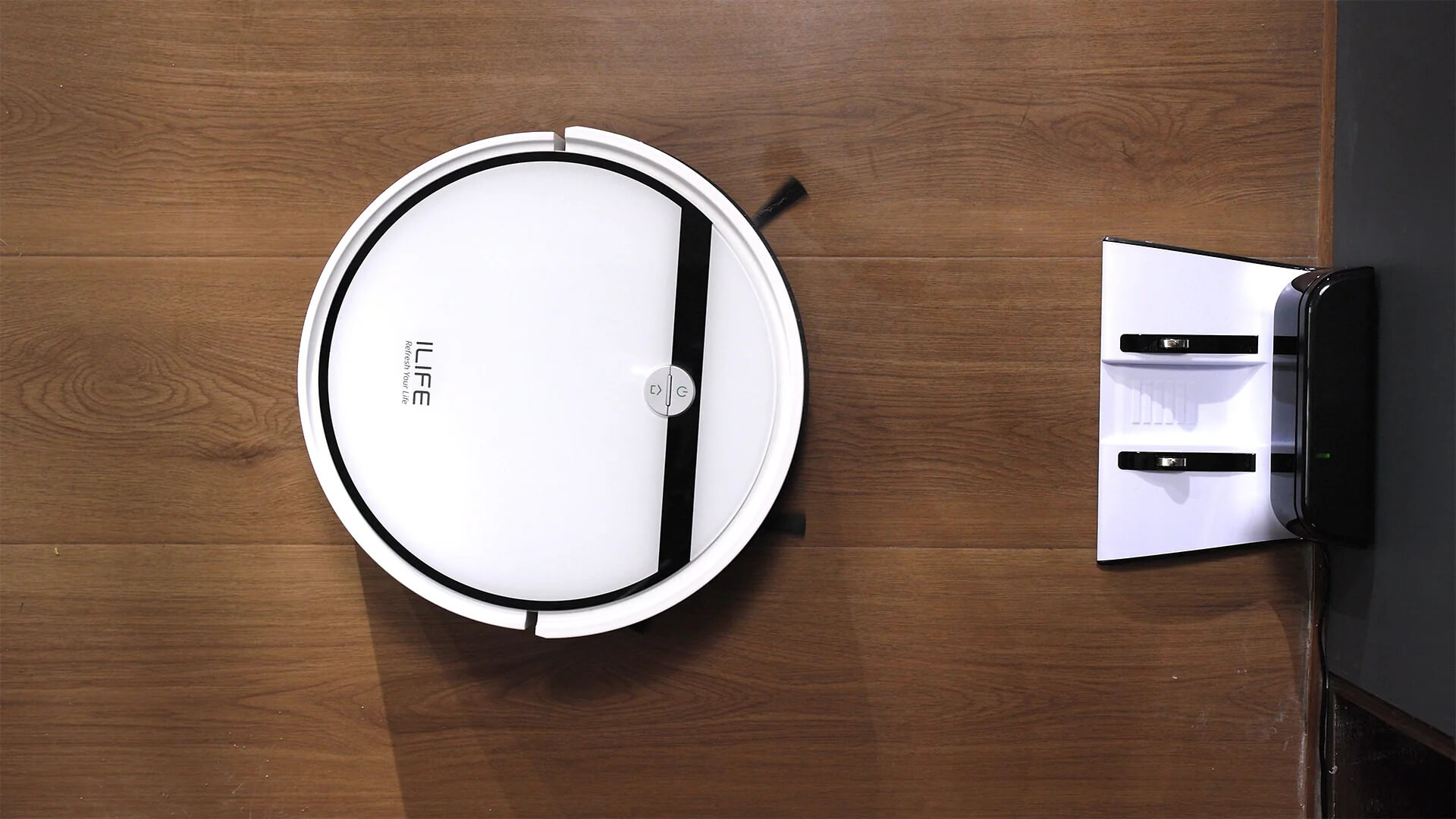
What’s The Best 360 Robot Vacuum For Pet Sheds?
Fortunately, numerous companies produce robotic vacuum cleaners tailored for tidying up after pets. Variants like the iLife V3X Pro, the Laresar Evol 3, and the iLife T10s performed exceptionally well in our robot vacuum testing facility, efficiently collecting almost all pet fur from both hardwood floors and carpets. Moreover, for those battling allergies, these quiet robot vacuums come equipped with high-efficiency filters designed to eradicate airborne allergens.
Naturally, one drawback of relying on a pet hair robot vacuum to manage pet mess is the necessity for regular maintenance. Components such as the roller brush, side brushes, and filters will inevitably deteriorate over time, necessitating replacement. Additionally, even if your sole aim is to have an industrial robot vacuum assist with tidying up after litter-scattering cats, you’ll need to be vigilant about emptying the dustbin frequently to prevent overflow. Prefer not to dwell on this chore?
Thankfully, there’s now a range of mini robot vacuums on the market featuring self-emptying dustbins, including the G20 Pro Honiture Robot Vacuum, T10s ILIFE Robot Vacuum Cleaner, and the T20S LDS ILIFE Robotic Vacuum. Some manufacturers offer the option to purchase the auto-emptying bases separately, allowing for an upgrade should you decide it’s a desirable feature.
If your pets occasionally have accidents, which can be a nightmare when paired with a robotic vacuum, then the new T20S LDS ILIFE Robotic Vacuum might pique your interest. It utilizes machine learning to recognize objects and learn from its interactions, ensuring it steers clear of pet waste — our testing revealed its effectiveness in this regard.

Is A Self-Emptying Base Important?
High-end robot vacuum cleaners often feature docking stations that autonomously empty themselves. Prices for these start at around $350 and can climb up to $1,400, depending on the latest enhancements. The advantages of opting for a self-emptying base are numerous. Firstly, your mini robot vacuum can empty itself if its onboard dustbin becomes full during cleaning, ensuring uninterrupted operation.
This feature also reduces the frequency of manual dustbin emptying, as most bases can store approximately 60 days’ worth of dust. Moreover, since the dust is securely sealed within a dust bag, users are shielded from allergens when replacing the bag—a significant benefit for allergy sufferers. Additionally, for industrial robot vacuums equipped with mopping capabilities, certain bases include water tanks and scrubbing functions to maintain the cleanliness of the mop cloth. Overall, this technology enhances the autonomy and effectiveness of your robot vacuum.
Nevertheless, there are downsides to self-emptying bases. Besides the extra expense, they occupy significantly more floor space. A commercial robot vacuum with a self-emptying base protrudes further from the wall and has a taller profile.
Moreover, these devices emit considerable noise during operation—often as loud as or louder than full-size vacuums—and each emptying cycle can last for approximately 30 seconds. The value of a self-emptying base hinges on individual needs and preferences.
While it offers tangible benefits for those with allergies or an aversion to handling dirt, it may not be suitable for individuals with limited space or a preference for a quiet household environment.

Is A Smart Robot Vacuum Essential?
The internet serves as a remarkable tool for maintaining connections, linking us not only to fellow individuals but also to our household gadgets. Nowadays, most automated vacuum cleaners are equipped with companion applications for smartphones, granting users complete control over their devices from anywhere.
Even models lacking mapping capabilities, are tethered to your home’s WiFi network and managed through an application. Although functionalities may differ among brands and models, typical features of these applications include initiating or halting cleaning cycles and adjusting suction power levels. Like in the case of the iLife V3X Pro which is an upgrade of the iLife V3s Pro, were the suction power was almost tripled in the new version of this commercial robot vacuum series.
When a robot vacuum boasts app compatibility, it often signifies integration with Amazon Alexa or Google Assistant. In such cases, users can activate voice commands by enabling the corresponding skill and issuing directives like “Start cleaning, ILIFE,” prompting the vacuum to commence its operation.
While some entry-level robot vacuums still come with remotes rather than app connectivity, opting for these models may offer cost savings at the expense of convenience. Losing the remote could potentially hinder access to the vacuum’s full range of features. Nevertheless, all robot vacuums are equipped with a built-in start/stop button as a minimum feature.
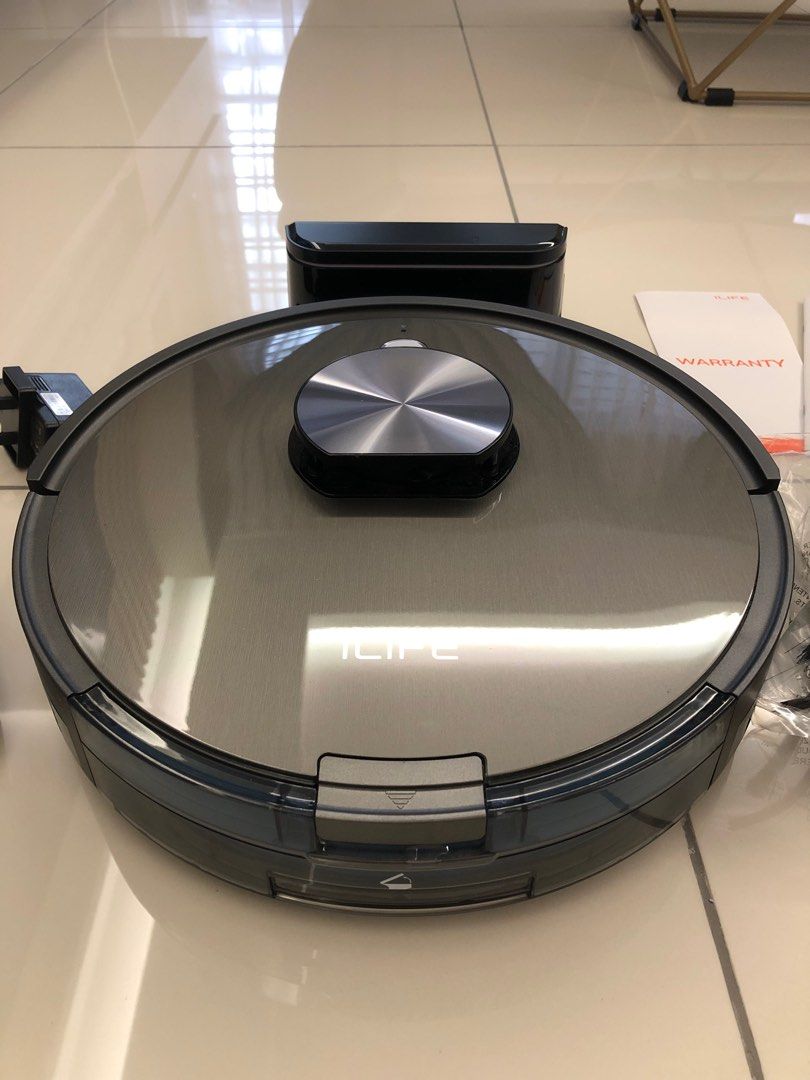
Why The Fuss About Battery Life?
Let’s delve into the aspect of robot vacuum battery longevity: It holds significance within certain limits. In our extensive testing of various 360 robot vacuums, the majority endured an entire cleaning cycle without requiring a recharge.
Typically, a robot vacuum can operate for around ninety minutes, with premium models extending this to a complete two-hour session. Moreover, numerous vacuums possess the capability to autonomously return to their docking stations, recharge, and resume cleaning until the task is completed.
Know The Amount You Are Willing To Pay For A Robot Vacuum
Clean smart robot vacuums come in various shapes and sizes, offered at different price points. Generally, investing more money grants access to enhanced functionalities. For instance, premium robot vacuums boast superior mapping capabilities, alongside features like customized cleaning zones, single-room cleaning, and targeted cleaning for heavily trafficked areas. Moreover, they often come with additional perks such as self-emptying dustbins and sonic mopping attachments.
Nevertheless, we’ve identified budget-friendly robot vacuums priced under $119 that deliver comparable, if not superior, cleaning performance compared to models priced significantly higher. However, expect fewer extravagant features at this price range. Additionally, bear in mind that manufacturers frequently offer discounts on older models when launching new ones.

Robot Vacuums Below $200
Entry-level to mid-range robotic vacuum cleaners will provide extended cleaning durations, spacious dust compartments, and slim designs. However, in exchange for cost savings, they often omit features such as Wi-Fi connectivity and advanced navigation. Consequently, instead of following a systematic path within a room, they maneuver erratically until the cleaning task is completed.
Our top recommendation priced below $200 is the ES23 Clean Smart Robot Vacuum Cleaner, available at just $119. Despite its affordable price, it outperformed many other robotic vacuums in our testing. And comes equipped with Wi-Fi connectivity as well as compatible with Alexa and Google Assistant, it offers added convenience and smart integration capabilities.
Robot Vacuums Priced Between $500-$800
If you’re willing to allocate more funds towards a home cleaning service, you’ll unlock a plethora of options boasting advanced features like home mapping, targeted room cleaning, and automatic dirt detection. Home mapping proves invaluable as it significantly enhances the cleaning efficiency of a robotic vacuum, ensuring thorough coverage of your entire living space rather than haphazardly navigating beneath furniture.
Among our top choices in the current market, the Evol 3 Laresar robot vacuum priced at $599 offers a balanced blend of affordability and functionality with its multi-level mapping and room-specific cleaning capabilities. Other noteworthy contenders in this price bracket include the G20 Pro Honiture robot vacuum priced at $639, the discreetly efficient iLife V3x Pro equipped with a self-emptying base, available for $799.

Robot Vacuums Priced Above $800
Quality assistance comes at a price. Within this price range, there’s a limited selection of robot vacuums, and most of their advanced functions fall into the category of “nice to have” rather than “absolutely essential.” These functionalities include mapping multiple floors, avoiding specific zones, autonomously emptying dustbins, and collaborating with other robot vacuums.
Our top choice in this category is the T20s LDS iLife robotic vacuum. Not only does it excel in vacuuming, but it also comes with a charging dock equipped with a dustbin that automatically removes dirt from the vacuum. This eliminates the need to empty the vacuum after each cleaning session or handle the dust manually. Moreover, the T20s can seamlessly integrate with the T10s ($989), a robot mop, so that once vacuuming is completed, mopping can commence. However, the T20s comes at a price of $1,319, making it a significant investment.
Maintaining Your Robotic Vacuum
Given that most 360 robot vacuums are engineered for cleaning, it’s common to overlook the necessity for routine maintenance. Overlooking cleaning procedures ranks among the top 9 mistakes users often commit with their vacuum cleaners. It’s advisable to regularly empty the dust bins post-use to prevent an accumulation of debris, which can impede the vacuum’s performance.
Likewise, it’s prudent to remove any entangled hairs from the rotating brush and clean the filters. Some manufacturers provide specialized cleaning tools to simplify these tasks. Furthermore, the filters require periodic replacement—consult your robot vacuum manual for recommendations on replacement frequency and purchasing options.

Are There Disadvantages To Owning A Robot Vacuum?
At times, automated vacuum cleaners may seem too perfect to be true, and there are certainly aspects to consider before investing in one. Initially, it’s important to note that a robot vacuum cannot fully substitute for your traditional upright model.
Regrettably, these devices lack the suction power of corded or stick vacuums. They are primarily suitable for light, routine cleaning tasks — you’ll still need to use the best vacuum cleaner every few weeks, to do some manual cleaning. So, don’t count on replacing manual vacuuming with a robot vacuum.
Moreover, robot vacuum cleaners can occupy a considerable amount of floor space, especially if you choose one with a self-emptying base that remains in a fixed position. For instance, the T20s LDS iLife robotic vacuum, despite its impressive appearance, requires ample room for its multifunctional base. Additionally, any robot vacuum you select will need sufficient clearance on all sides and above to operate effectively. Therefore, it’s essential to check the space requirements beforehand and consider how it will blend with your home décor.
Although robot vacuums have made significant advancements and some are quite autonomous, some models may still encounter difficulties navigating tight spaces and may require occasional assistance to resume operation. Unless you clear potential obstacles before each cleaning session, be prepared to lend a hand to your robot vacuum occasionally. Furthermore, if you opt for a model without a self-emptying base, keep in mind that you’ll need to empty the dustbin yourself every few cleaning cycles.
While it’s crucial to be mindful of these considerations, don’t overlook the convenience and positive impact that these devices can have on your daily life. Ultimately, they contribute to maintaining a clean home with minimal upkeep.

